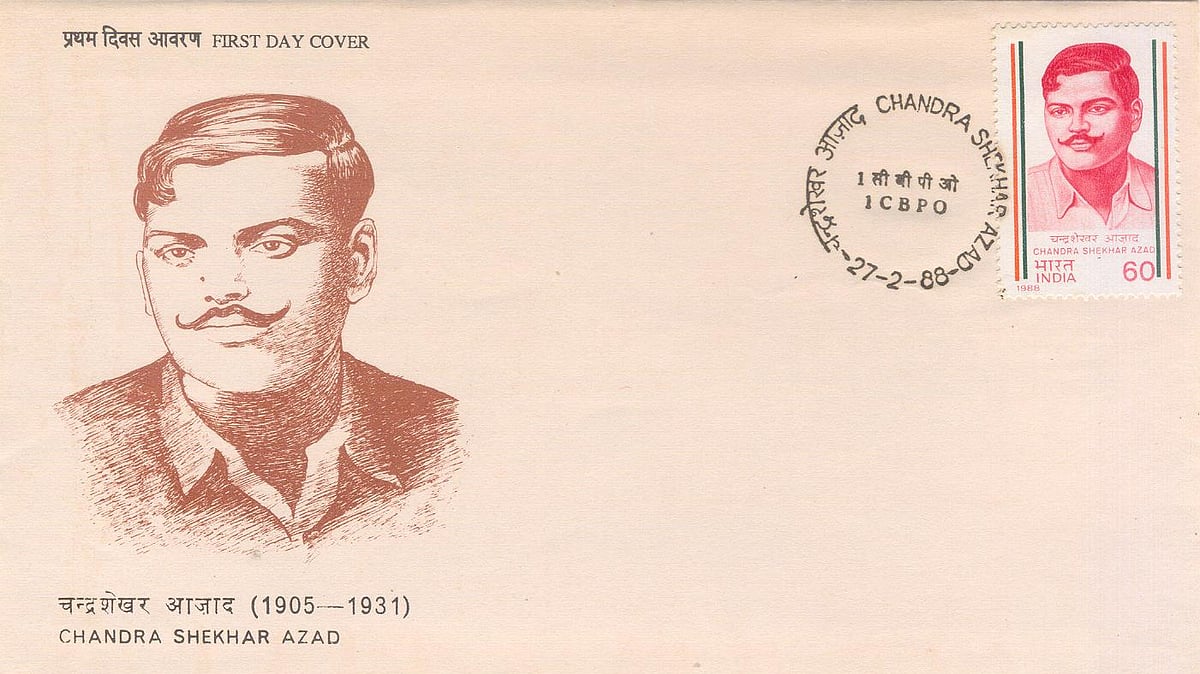Chandra Shekhar Azad, a Badass Revolutionary the British Feared
Azad had sworn that he’ll never be taken captive by the British govt. He shot himself with the last bullet he had.

advertisement
Video Editor: Rahul Sanpui
(This article was first published on 27 February 2017 and has been reposted from The Quint’s archives to mark Chandra Shekhar Azad’s birth anniversary.)
Chandra Shekhar Azad. The mere name could make a British policeman during the Raj era break into cold sweat. He lived a mere 24 years, but made a world of difference to India’s freedom struggle. When he died on 27 February 1931, freedom for his beloved nation was nowhere in immediate sight. But he created huge dents in the colonisers’ morale and inspired the generations to come.
What His Parents Planned
His mother Jagrani Devi and father Sitaram Tiwari wanted him to be a great Sanskrit scholar. Therefore they sent him to Kashi Vidyapeeth, Banaras, to study. Little did they know that he will be diving headlong into the freedom struggle.
Call Of The Motherland
In December 1921, when Mohandas K Gandhi launched the Non-Cooperation Movement, Chandra Shekhar, then a 15-year-old student, joined.
As a result, he was arrested. On being produced before a magistrate, he gave his name as "Azad" (The Free), his father's name as "Swatantrata" (Independence) and his residence as "Jail".
Non-Violent Struggle to Armed Resistance
But when Gandhiji suspended the Non-Cooperation movement in 1922, Azad was deeply disappointed and decided to embrace the violent way to wrest freedom from the colonisers.
He met another firebrand revolutionary Ram Prasad Bismil who had formed the Hindustan Republican Association (HRA), a revolutionary organisation.
Bismil was impressed by Azad, when Azad reportedly put his hand over a lamp and did not remove it till his skin burnt. From that day he came to be known as Chandra Shekhar Azad among the people.
The Badass Revolutionary
He was involved in
- the Kakori Train Robbery of 1925,
- in the attempt to blow up the Viceroy's train in 1926,
- and at last the shooting of JP Saunders at Lahore in 1928 (to avenge the killing of Lala Lajpat Rai).
Living In Disguise
Azad made Jhansi his organisation's hub for some time.
- He used the forest of Orchha, situated 15 kilometres from Jhansi, as a site for shooting practice and, being an expert marksman, he trained other members of his group.
- He built a hut near a Hanuman temple on the banks of the Satar River and lived there under the alias of Pandit Harishankar Brahmachari for a long period.
- He taught children from the nearby village of Dhimarpura (now renamed Azadpura by the Government of Madhya Pradesh) and thus managed to establish good rapport with the local residents.
Azad Hain Hum, Azad Hi Rahenge
Remember Sukhdev Raj from the trio of Bhagat Singh, Sukhdev and Rajguru? Sukhdev was with Azad and they were set to meet an accomplice in the famous Alfred Park in Allahabad on 27 February 1931.
An informer got wind of the plan and quickly informed the police. The police surrounded him in the park and he was wounded in the process of defending himself and Sukhdev Raj.
Fight Unto Death
Azad provided cover fire and forced Sukhdev to escape the spot so at least one of them survives for serving the cause of freedom.
Azad, a great marksman and a brave man, shot and killed three British policemen (he always spared his native Indian brethren as he felt they were forced to fight) and wounded some others.
After a long shootout, holding true to his pledge to never be captured alive, he shot himself dead with his last bullet. The Colt pistol of Chandra Shekhar Azad is displayed at the Allahabad Museum.
His motto was: Dushman ki goliyon ka hum saamna karenge, Azad rahein hain, azad hi rahenge! And he lived and died by it.
(At The Quint, we question everything. Play an active role in shaping our journalism by becoming a member today.)